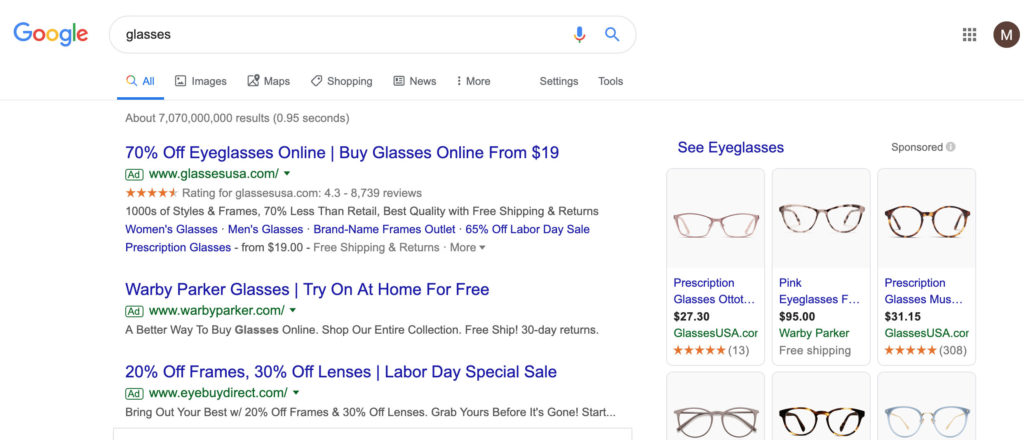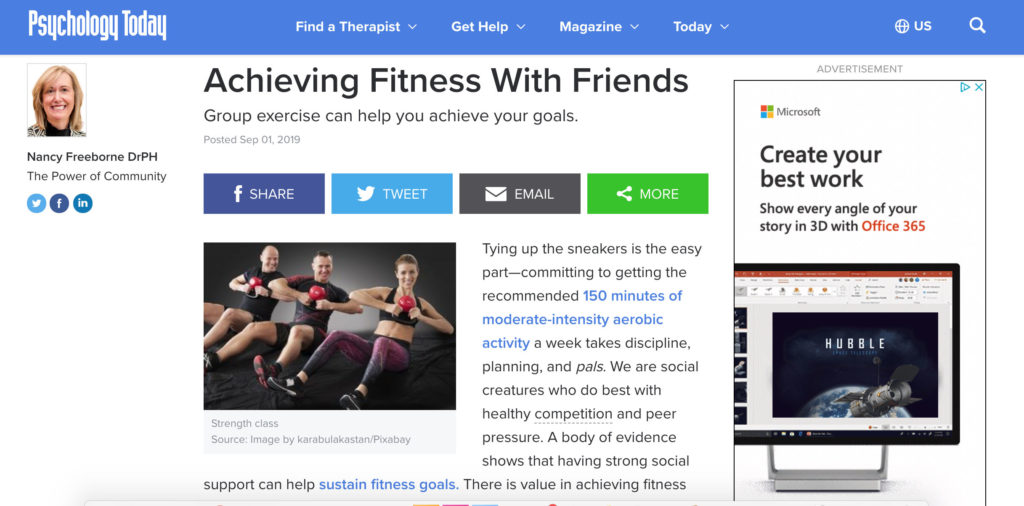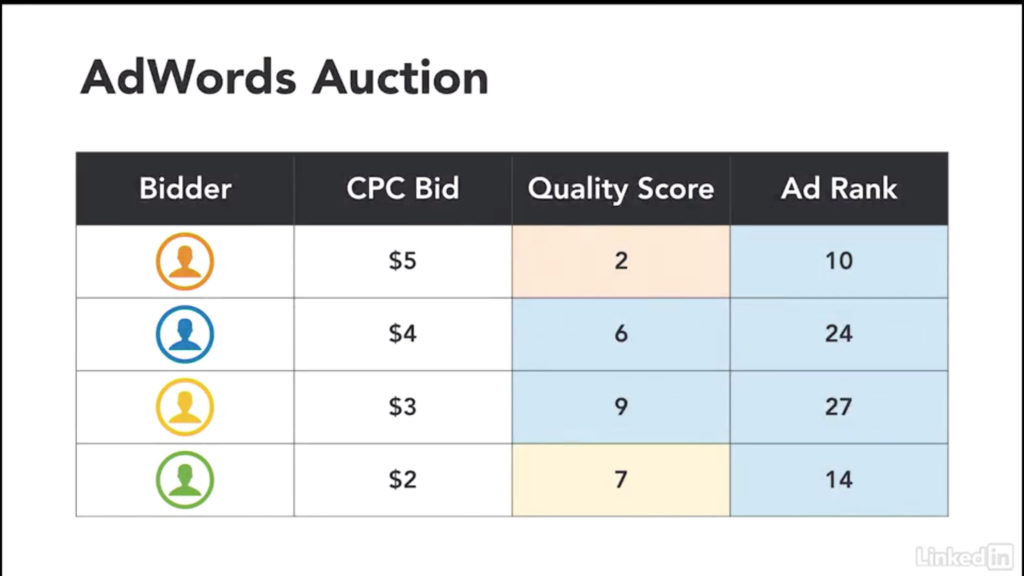I finished Brad Batesole’s LinkedIn Learning course on Google Ads (Google AdWords) Essential Training. His course shows how to set up search text and display advertisements in an organized and effective way.
Google Ads is a powerful tool to reach customers directly who are searching specifically for your type of product or service, or viewing a website with related content.
It’s measurable, easy to track, and helps to drive customer purchases or website traffic.
Google Text Ads vs. Display Ads
The Google Network is separated into two areas: the Google Search Network and the Google Display Network.
The Search Network includes text ads in Google search results, but they can also appear in Google Maps, Google Shopping, and websites that are search partners. Advertisements that are part of the search network will link your keywords to words or phrases someone has used in their search.

Google Text Ads
- Are text-only
- Bump your ad to the top over organic (non-paid) search listings
- Reach customers searching for your specific service or product
Having your website show up at the top of Google search results naturally is very hard and takes a lot of work in SEO optimization and building out your website in a way that makes it an authoritative choice for the search engine. It could take years to get to the top of the list.
With paid advertising, you jump ahead of the line and get featured prominently when a potential customer searches for a phrase or keyword you are targeting.

Google Display Ads
- Use photos
- Reach a wide range of customers with broad interests
- Build brand awareness and customer loyalty
- Increase engagement with customers
- Allow you to choose more specifically where your ads appear and what type of audience
Google Display Ads are typically banner ads and work differently from text ads.
Instead of targeting based on a person’s keyword search, Google matches display ads with websites with content that are related to your targeting.
You can also use display advertising to show targeted ads to people who visited your site but then abandoned the shopping cart without checking out. The ad would follow them on whatever website they were browsing next, reminding them to finish their purchase. This is called remarketing.
Batesole recommends starting out with Google Text Ads if you are new to Google Ads because it is easier to set up.
Benefits of Google Ads
- Target based on keywords, specific location or radius
- Google Ads can show up on search engines, commercial sites or personal sites
- Set the time, day, frequency for ads to show on certain days or time periods during the week
- Target based on device: mobile, desktop, or both
- Pay-Per-Click (PPC): you’re in control of your budget and only pay when someone clicks the ad
- Return on Investment (ROI): if someone clicked your ad and purchased your product, you will know. You will be able to weigh the cost of advertising versus how many consumers clicked the ad and followed through on the checkout page.
How to Organize Your Ad Campaign
Brad Batesole recommends organizing your ad campaigns by objective and match type. For example, instead of setting up an ad campaign for categories like jackets and shoes, think about your objectives first.
If you advertise online for Swings Coffee Roasters, your objectives might be to show your advertisement alongside your competitor’s website listing and to show up in listings when people search online for coffee in Google.
Batesole recommends setting up four campaigns to start:
- Competitors – Exact Match (Starbucks, Peets Coffee, Dunkin Donut, etc.)
- Keywords – Broad Match (cappuccino, hand-pour coffee, drip coffee, coffee shop)
- Different Types of People Searching for Coffee (office workers on break, freelance workers, moms, remote workers)
- Comparison (Coffee Company A vs. Coffee Company B)
Beneath these ad words we would make several ad groups—one ad group for each competitor in the exact match campaign, then create ad groups for your broad match campaign.
Draw out your structure for ad campaigns on spreadsheet before you set it up. Keep keywords limited—only 10-15 per ad group in the same theme.
Google Ad Quality Scores
You would think that the company that pays the most money for an ad would show up at the very top of search listings.
If Starbucks bids $5 per click, Dunkin Donuts $4 per click, and Peets Coffee $3 per click, you would expect Starbucks to be top priority.
However, Google doesn’t rank ads that way.
Each company bidding gets a Quality Score, which determines their Ad Rank. The Quality Score is calculated by looking at the maximum bid and multiplying against your ad Quality Score. Your Quality Score runs from 1 to 10.
If your overall rank is too low, your ad will not show up at all.

This way, even though Dunkin Donuts bid $4 and Starbucks bid $5, if Dunkin Donuts has a higher Quality Score, it will take a higher ad slot above Starbucks in search listings.
Your Ad Quality Score is Based on Several Factors:
- Your Expected Click-Through-Rate (CTR): Google will estimate how often people will click your ad
- Landing Page Experience: your ad is only useful if visitors find what they expect when they click on the ad. Landing pages must be very relevant to the ad, easy to navigate and transparent on how you collect customer data
- Language in Your Ad vs. What User Searched for in Google – this prevents choosing a company that is stuffing its ad with irrelevant keywords
- Ad Extensions: including your business phone number, recent customer reviews, other extensions increases your quality score
You can improve your Quality Score through the right keywords, ad copy, refining your landing page experience and using all the available ad formats.
